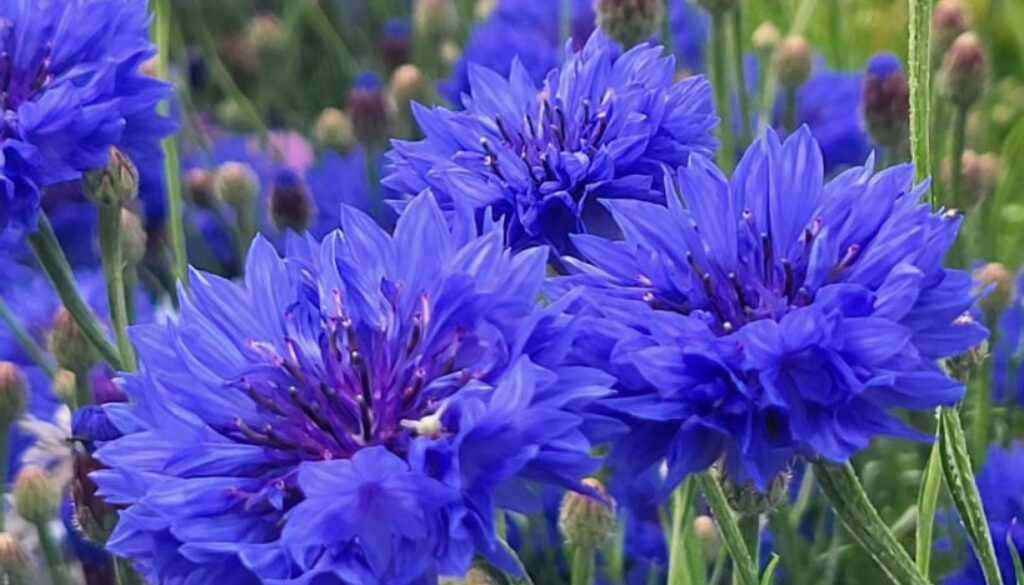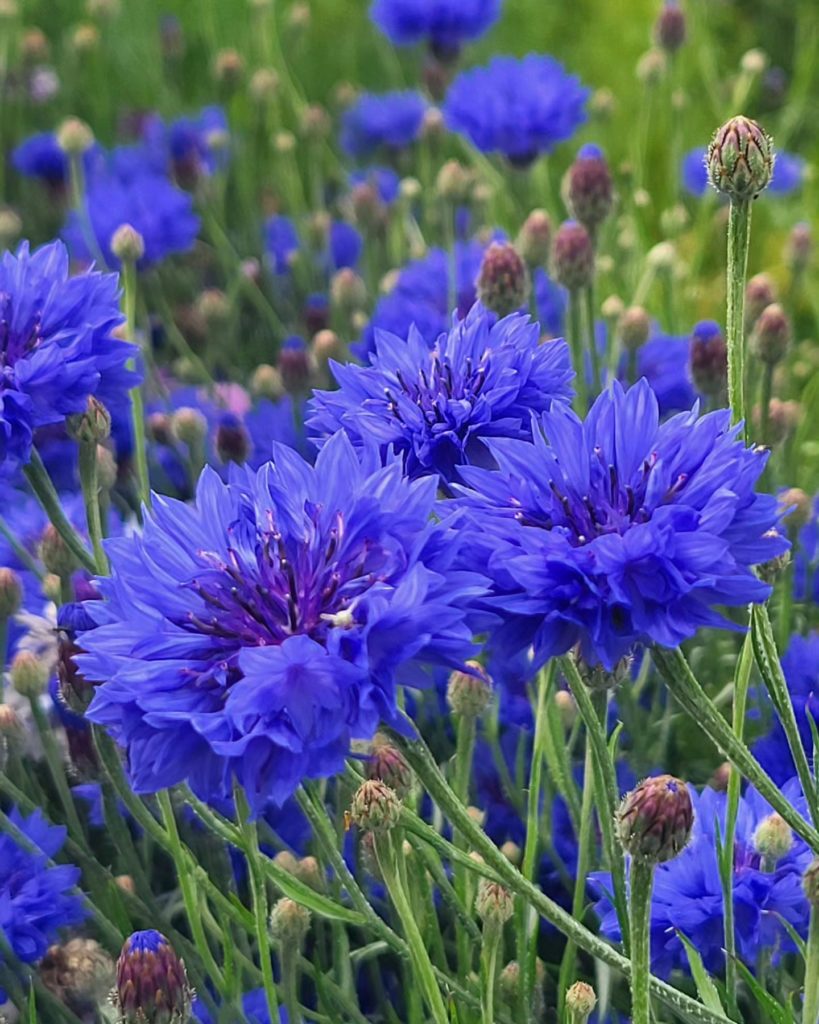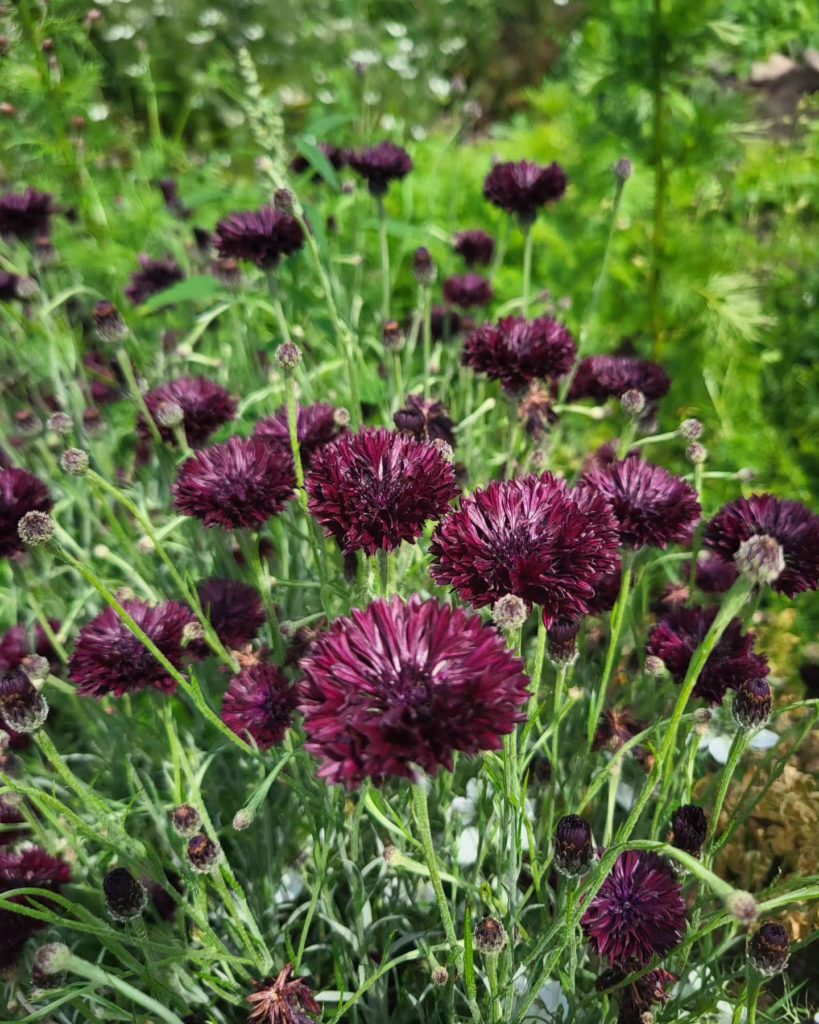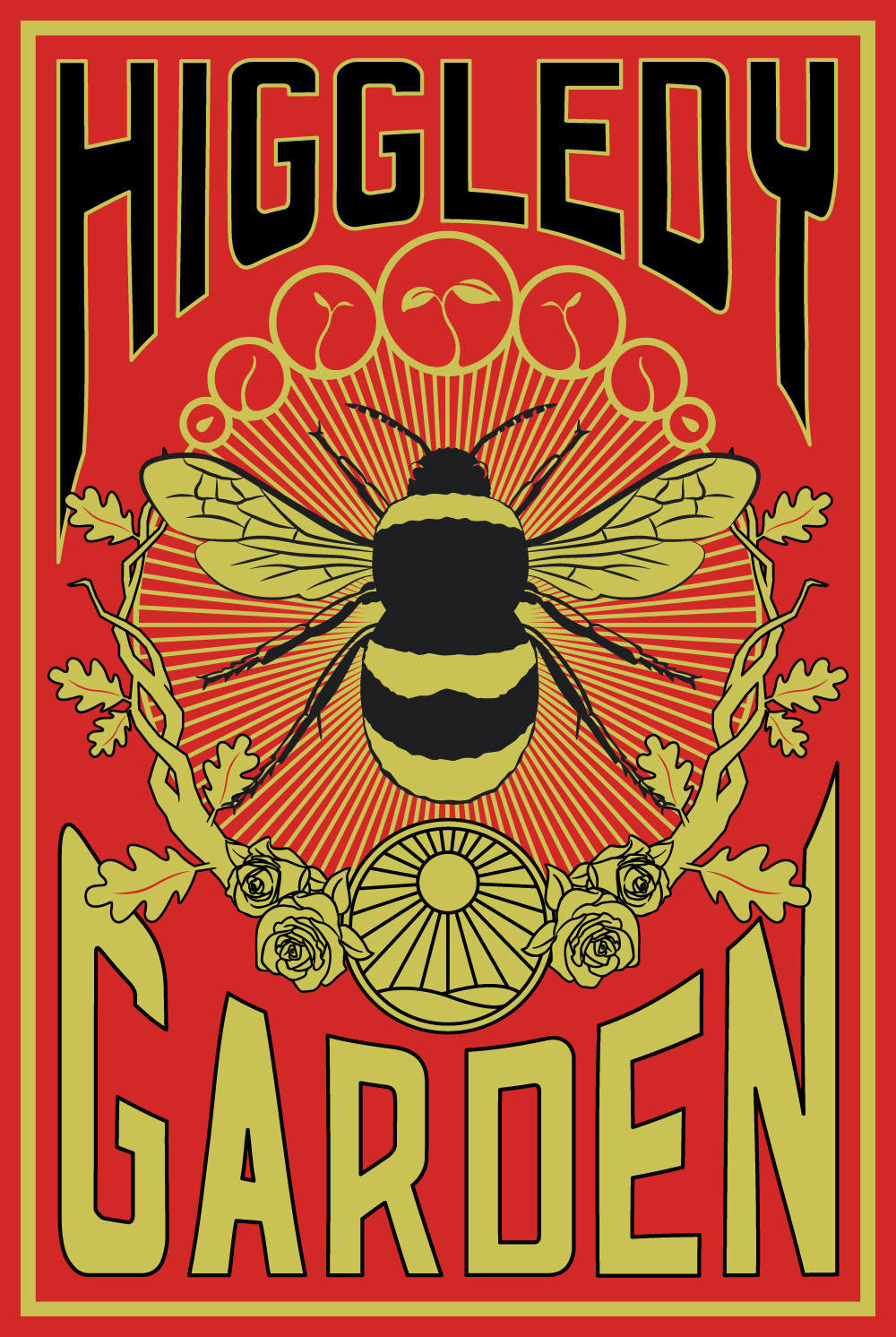Growing cornflowers from seed. A Higgledy ramble.


A Cornflower Affair: Growing the Dazzling Dandies of the Cottage Garden.
I’ve always had a soft spot for cornflowers. There’s something cheerfully dishevelled about them—like they’ve turned up to a summer fête in crumpled linen, pockets full of sweets, ready to flirt with the calendulas and make rude jokes about the marigolds. They’re not flowers that take themselves too seriously, and thank heavens for that.
Cornflowers (Centaurea cyanus, if you’re feeling posh) are the cornerstone of any self-respecting cottage garden. They’ve got that wildflower spirit but will behave just enough to let you keep your reputation among the tidy-row brigade. They’re hardy annuals, easy as you like to grow, and if you’re kind to them, they’ll scatter their seed around like drunken confetti and come back for an encore next year.
A Brief But Colourful History
Once upon a time—well, quite a few times, actually—cornflowers were considered the bane of cereal crops. A pest. A weed! (Shocking, I know.) They’d turn up uninvited in wheat fields, all blue and breezy, waving at the harvest like they owned the place. Farmers grumbled, but poets swooned. There’s a German legend about them growing in the footsteps of the Virgin Mary. And Kaiser Wilhelm II took quite a shine to them, wearing one in his buttonhole to symbolise German unity. Bit intense, perhaps, but it shows the range.
Over here, they were the favourite flower of the young lads in the trenches during the Great War. Something about that steadfast blue, like the English summer sky they were missing. Romantic and tragic and brave all at once. They deserve a spot in every garden, if only as a nod to those boys.
Blue Ball: The Proper Job
Let’s start with Blue Ball, the classic, no-nonsense cornflower that looks like it’s been dipped in the ink of a Victorian schoolmaster’s pen. This is the one you’ll see in old seed catalogues, all stiff and upright and reliable as a village policeman.
It’s a true blue, which is rare in the flower world (most so-called blue flowers are just sulking purples or overly optimistic lavenders). Blue Ball knows what it is: a glorious mop of frilly petals on a wiry stem, standing about 90cm tall and swaying just enough to be charming.
Grow it in the middle of your patch, let it mingle with the calendula and cosmos, and watch the bees fall over themselves in delight. You’ll get a sea of blue from June through August if you sow in spring—or even earlier in autumn, if you like a head start and enjoy living on the edge.
Black Ball: The Velvet Rogue

If Blue Ball is the village constable, Black Ball is the slightly mysterious bloke at the end of the bar who drinks Guinness, quotes Byron, and probably owns a motorbike. Deep maroon, almost black in some lights, it’s got that brooding look of someone who listens to Tom Waits and writes poetry on the back of till receipts.
It’s not actually black, but you’d be forgiven for thinking so in the right light. The petals are more like velvet ribbons, and when the sun catches them, they smoulder. A marvellous contrast to anything yellow or orange. Pop a few alongside your rudbeckias or coreopsis and you’ll feel like a painter dabbing oils on canvas. Still just as easy to grow, and still beloved by bees, who couldn’t care less about the drama—they just want the nectar.
Classic Magic & Classic Romantic: The Sweethearts
The Classic Magic and Classic Romantic mixes are like those paint-smeared watercolour palettes you used in primary school—surprising, whimsical, and ever so slightly chaotic.
Classic Magic throws up blues, whites, pale purples, and dusky pinks like it’s rummaging through a box of old bunting. Every stem’s a surprise, and there’s something wonderfully nostalgic about it—like rummaging through a drawer of old love letters and finding one you forgot about.
Classic Romantic, on the other hand, leans into the softer pastels—blush pinks, faint lavenders, and whites. It’s the floral equivalent of a handwritten note tucked into a picnic basket. Not quite as raucous as Magic, but still playful. Lovely in posies and jam jars, especially if you’ve got guests coming over and want to pretend your garden just happens to look like a Rosamunde Pilcher film set.
How to Grow Cornflowers Without Breaking a Sweat
Right then. Here’s the sensible bit. Though frankly, growing cornflowers is a doddle even if you’re a bit heavy-handed or prone to distractions (both of which I am).
When to sow: You’ve got two main windows—late August to October for an early flowering start the next year, or March to May for a good summer display. I tend to hedge my bets and do both. Autumn sowings give you sturdier plants, but spring sowings are no slouches either.
Where to sow: Full sun is best, but they’ll tolerate a bit of shade if they must. They’re not fussy about soil, though they’d prefer it not to be boggy. Treat them mean, and they’ll still be keen.
How to sow: Direct sow into prepared ground—rake it fine, mark your rows or scatter them with gay abandon, cover lightly, water, and walk away. Or sow in modules if you want a bit more control. Just don’t overwater the seedlings—they don’t like soggy feet.
Maintenance: Deadhead to keep the flowers coming. If you forget, they’ll go to seed and start a family of their own (which is charming in its way). Tall plants might need a bit of support, especially in windy spots—pea sticks are your friend here.
Cornflower Trivia & Folklore (For Impressing Guests at Garden Parties)
-
In folklore, cornflowers were used to detect fidelity. If the flower wilted quickly after being worn, it meant your beloved didn’t return your affections. Bit brutal, but useful intelligence.
-
Cornflower syrup was once a popular remedy for eye problems. They called it “bluebottle water” and dabbed it on sore peepers. I make no claims for this—see a doctor, not a gardener—but it’s a nice bit of trivia.
-
In the language of flowers (which is a thing, apparently), cornflowers symbolise hope, delicacy, and sometimes a single blessedness, which I take to mean being gloriously, stubbornly single. Cheers to that.
-
Napoleon’s wife, Josephine, adored them and had them embroidered on everything from cushions to corsets. I feel we’d have got on.
Final Thoughts from the Potting Shed
Cornflowers, for all their flouncy, wild looks, are tough as old boots and twice as generous. They’ll give you colour, charm, and pollinator traffic for weeks on end. You can cut them for the house, dry them for confetti, or just let them carry on being cheerful out there among the other misfits and beauties.
So sow a packet or two. Let Blue Ball play the hero, Black Ball bring the mystery, and let Magic and Romantic dance around the edges like they’ve escaped from a fairytale. You’ll be glad you did—and so will the bees.
Kindest regards
Higgers and Flash.
